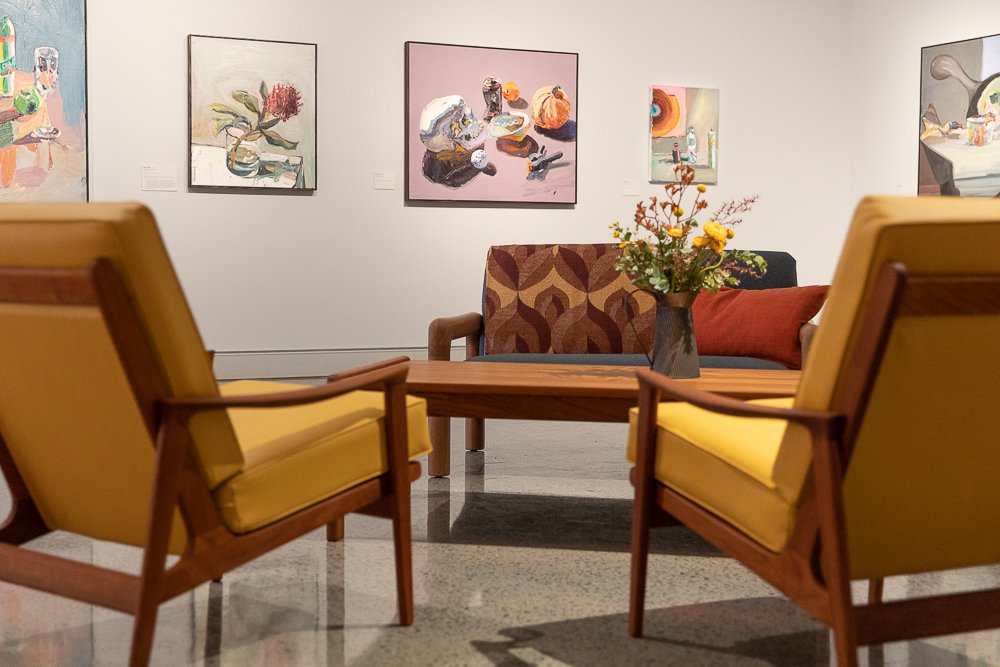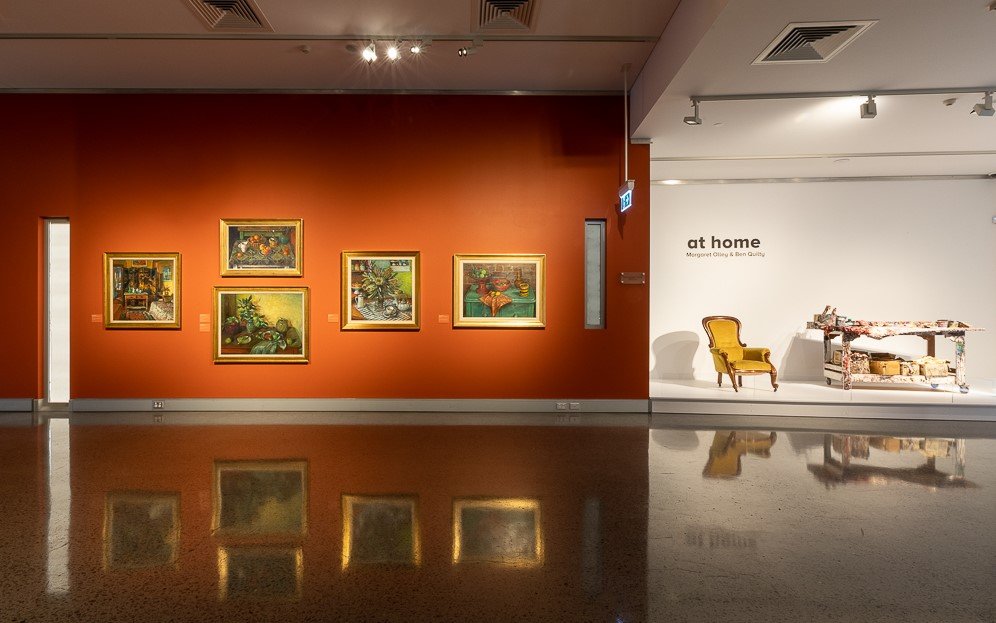On home turf: Margaret Olley and Ben Quilty at Tweed
/What with lockdowns and gallery closures, the pandemic has brought about many changes in art practice. Interestingly, it is the established genre of still life where this can be seen most clearly.
At the Tweed Regional Gallery and Margaret Olley Art Centre, the exhibition ‘At Home’, which exhibits still-life paintings by Ben Quilty (born 1973) together with those by his friend and mentor Margaret Olley (1923–2011), we witness the changing relationships to objects, pictorial objectives and techniques which have occurred over a generation.
As a young artist, Olley’s primary focus was landscape. Not owning a car, the convenience of a still life set up in her house gradually became her chosen subject matter – either in the form of an interior or a focused arrangement on a table. Her works are considered and sensual, with the carefully placed objects, flowers and fruit capturing light and the rhythm of space. Colour and scale are naturalistic and the order rational.
For those familiar with Quilty’s work dealing with expressions of humanity, such as compassion, anger and empathy, the return to still life may seem surprising, but it has been a constant within his oeuvre following on from his ‘Torana’, ‘Skull’ and ‘Budgie’ series of the 2000s. When COVID brought about the need for Quilty’s son Joe to homeschool in his father’s studio, Quilty decided not to work on violent emotional paintings, but to turn to the more meditative still life which he had always enjoyed.
Quilty’s work does not propose still life as a closely cropped and focused arrangement on a table, nor does he suggest an exercise in formal deconstruction. His still-life painting is more about translating a universe of feeling inspired by the natural world through the sensations of sight and touch into a sensuous combination of colour and light. It is only to be expected that his subject matter would reveal a generational difference, and Quilty’s works Multi Vitamins and Surface Spray and Locked down (both 2020) are clearly related to the pandemic.
Olley once told me that a teacher had accused her of having greedy eyes, and greedy eyes she had in the interior Chinese screen and yellow room (1996), where the work not only takes in the many objects in the room but flows into the adjacent blue kitchen. In Ranunculus and pears (2004), it is hard to imagine where one more object could fit as she masterfully handles both objects and space.
By contrast, Quilty’s Christopher’s Cobra Lily morphs into a tangle of surface shapes suggestive of its subject’s insect-eating powers, while Silence, Tone’s Waratah (also 2020) has a deeply poetic simplicity.
Curator Ingrid Hedgcock has provided an interesting connection between the two artists by including a work by 15-year-old Olley and one by 18-year-old Quilty, each of which could have been executed by the other.
Olley’s home is on permanent exhibition at the Tweed, and the inclusion of the paint-laden table and Victorian chair from Quilty’s studio gives some idea of his working space alongside Mim Stirling’s and Steven Alderton’s photographs of the Quilty and Olley studios respectively. Their unique interconnection through art is established with the inclusion of Quilty’s Elwood Park (2002) to which Olley awarded that year’s Brett Whiteley Travelling Scholarship, and Quilty’s portrait of Olley which won the 2011 Archibald Prize.
Within the gallery spaces, audiences are encouraged to create their own still life as well as an online challenge on Facebook and Instagram. It is an exhibition which has a lot to give and a lot to think about.
Christine France, Murwillumbah
‘At Home: Margaret Olley and Ben Quilty’ is on display at Tweed Regional Gallery and Margaret Olley Art Centre, Murwillumbah, until 20 February 2022. As the Co-executor of Margaret Olley’s estate, the author worked closely with Tweed Regional Gallery to open the Margaret Olley Art Centre in 2014.






















